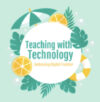Photo by Erik Eastman on Unsplash
In the ever-changing world of educational tech, making sure everyone, no matter their abilities, can fully dive into and benefit from the learning experience is super important to me. As I start to bring tech into my teaching, I’m all about making it accessible. Here’s my game plan on how I’m going to make sure tech is used inclusively and fairly in my teaching:
Understanding Diverse Learner Needs:
Before I throw any tech into the mix, I’m going to check out what my students need. This means looking at different abilities, learning styles, and anything that might make it tricky for them to access stuff. I’m also big on inclusive design, thinking ahead to make sure I’m covering all bases from the get-go.
Selecting Accessible Platforms and Tools:
I’m all about picking educational tools that already have accessibility features built in. Things like being screen reader-friendly, adjustable font sizes, and supporting different ways to input info. Plus, I’ll be keeping an eye on these tools, checking them out regularly to make sure they stay accessible when updates happen.
Providing Multiple Means of Representation:
I want to present info in lots of ways to suit different learning styles. Whether it’s transcripts for videos, captions, or descriptions for images, I’m all in. And giving students the power to choose how they learn best by offering different formats? Totally on my radar.
Facilitating Navigation and Interaction:
Clear pathways for moving around online stuff are a must. Especially for those using assistive tech. And when it comes to interactive bits like quizzes, I’ll make sure they’re designed with everyone in mind, with alternatives for those who might find certain interactions tricky.
Ensuring Compatibility with Assistive Technologies:
Regular check-ups to make sure all the digital tools play nice with assistive technologies are in the plan. I’m also making sure my students know exactly how to use these assistive tools with the tech we’re using.
Building Awareness and Training:
I’m on the lookout for ways to boost my knowledge about accessibility standards and best practices. Staying in the loop with what’s new in tech and how it can be more accessible is key. And I’m not leaving my students in the dark – they’ll get the lowdown on how to use the accessibility features and tools on their own.
Regular Accessibility Audits:
Routine checks on the accessibility of all the digital stuff are happening. If there are any hiccups, I want to know ASAP. I’m also setting up a way for students to tell me if something’s not working right for them – their feedback is gold for fine-tuning our tech.
Promoting Universal Design for Learning (UDL):
I’m adopting the Universal Design for Learning principles to create lessons that work for everyone. Flexible materials that cater to different learning styles? That’s the goal. Regular chats with students about how inclusive our materials are will keep things on track.
Collaborating with Support Services:
Teaming up with support services, like disability services, is a no-brainer. Their insights will help me get a full picture of what students with disabilities might need. And when it comes to individual accommodations, I’m staying tight with support services for personalized solutions.
Cultivating a Culture of Inclusivity:
It’s not just about tech – how I talk and show things matters too. Using language and images that include everyone is key. Keeping the educational community in the loop, from students to colleagues and parents, is an ongoing gig. Their input on how we can make things more accessible is crucial.
Continuous Reflection and Improvement:
I’m all for feedback – from students, colleagues, everyone. It’s the compass that points me to tweaks and changes needed for better accessibility. And as new tech rolls in, I’m keeping a close eye on how accessible it is and fixing any bumps in the road ASAP.
In a nutshell, I’m tackling accessibility in tech with a proactive mindset. It’s all about planning ahead, keeping an eye on what’s working, teaming up with support services, and making sure everyone’s included. I’m on a mission to provide equal access to all my students, making our learning environment a place that celebrates differences, boosts everyone up, and creates meaningful educational experiences.

